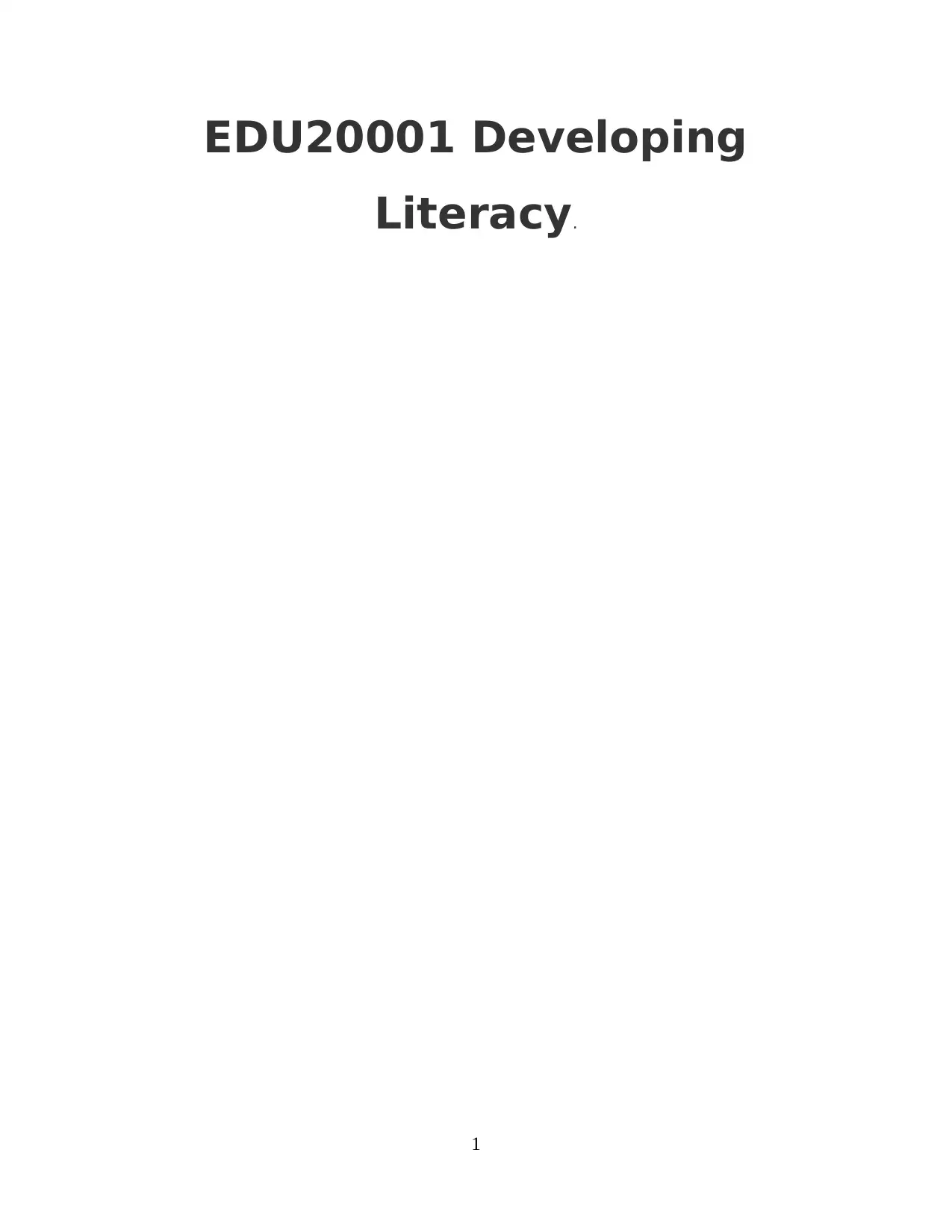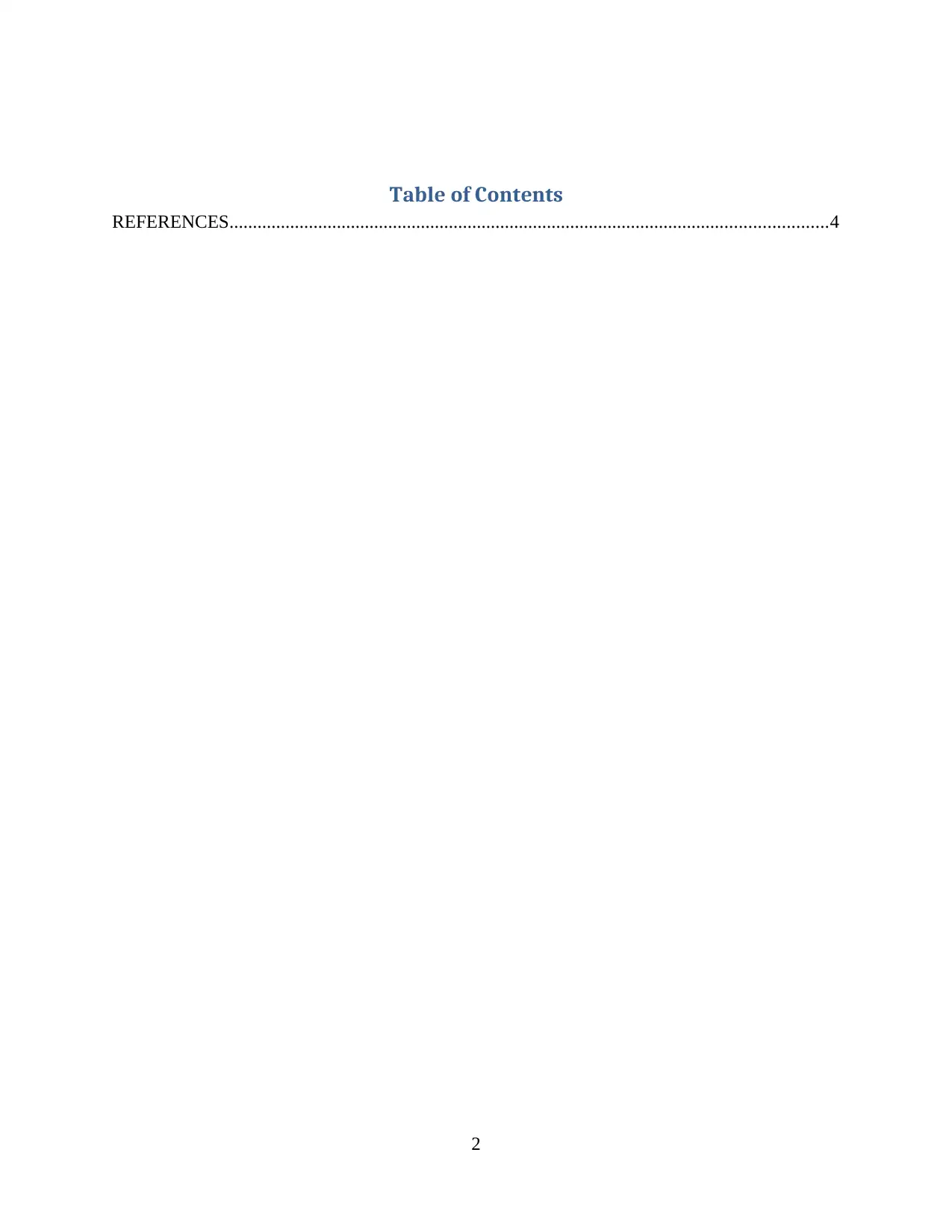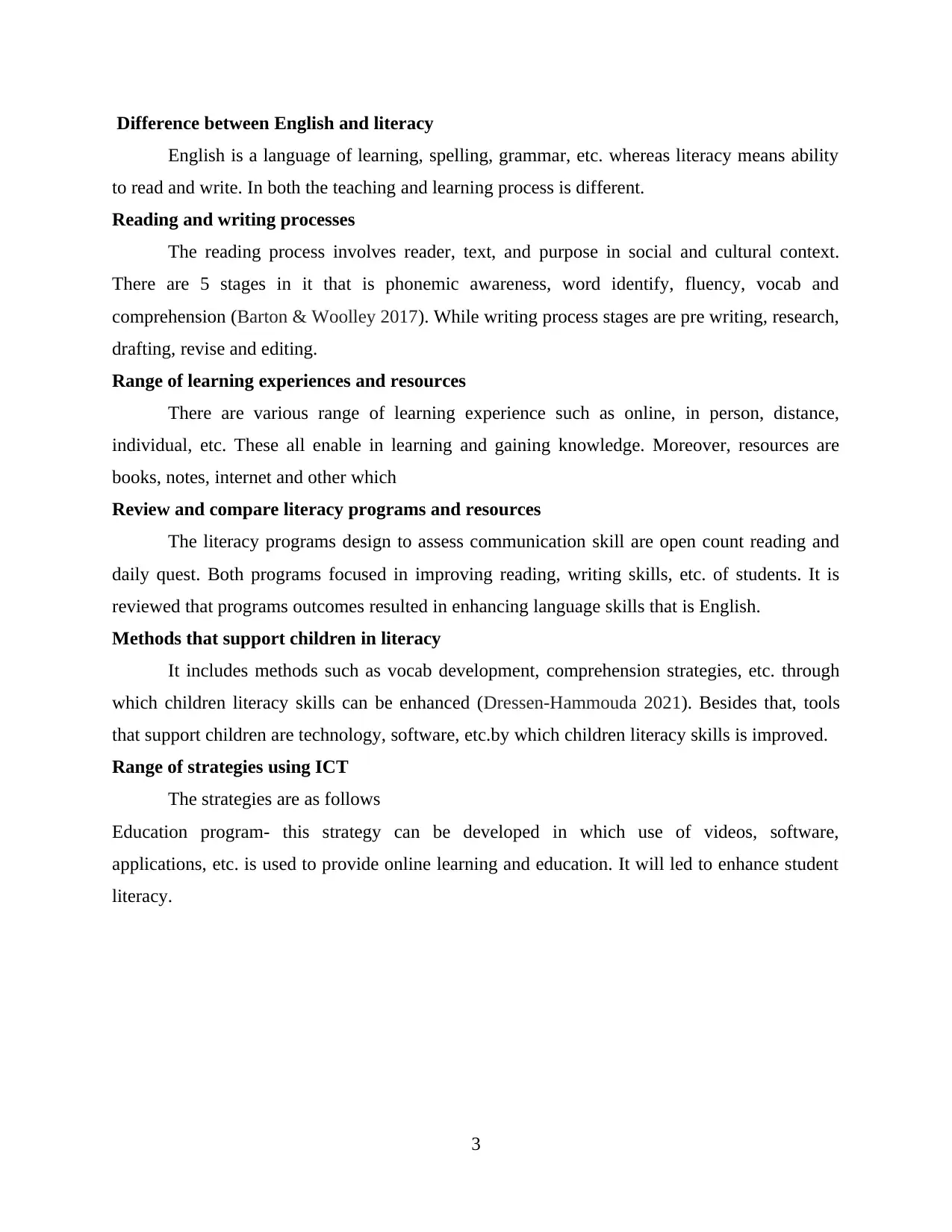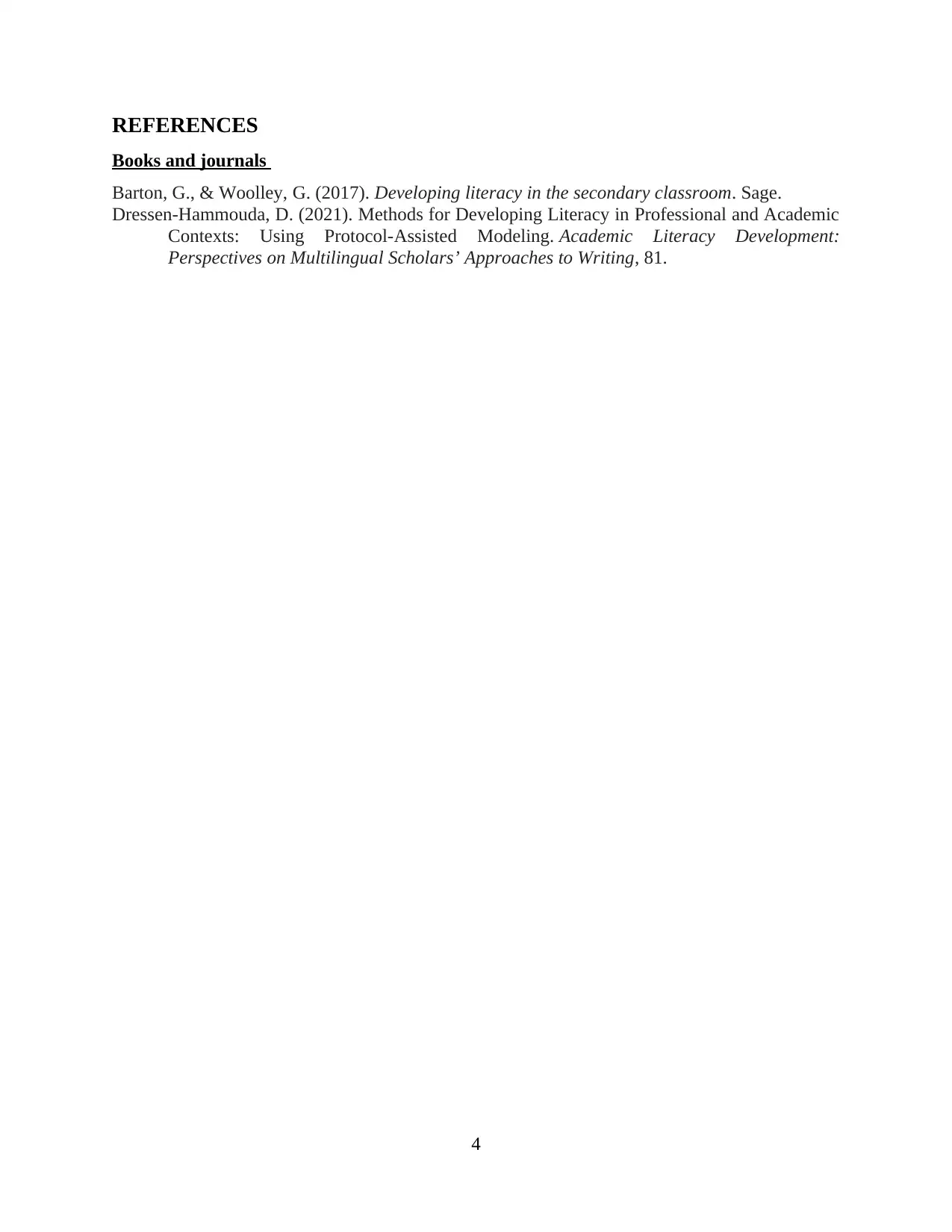Literacy Development: Programs, Resources, and Strategies for Students
VerifiedAdded on 2022/12/19
|4
|372
|57
Report
AI Summary
This report delves into literacy development, differentiating between English and literacy, and outlining the reading and writing processes. It explores various learning experiences and resources, including online and in-person methods, alongside books and the internet. The report reviews literacy programs designed to assess communication skills, such as open count reading, and examines methods like vocabulary development to enhance children's literacy. It also discusses the use of technology and software to support literacy skills and details strategies like educational programs leveraging videos and applications to improve student literacy. The report references key sources like Barton & Woolley (2017) and Dressen-Hammouda (2021) to support its findings.
1 out of 4











![[object Object]](/_next/static/media/star-bottom.7253800d.svg)